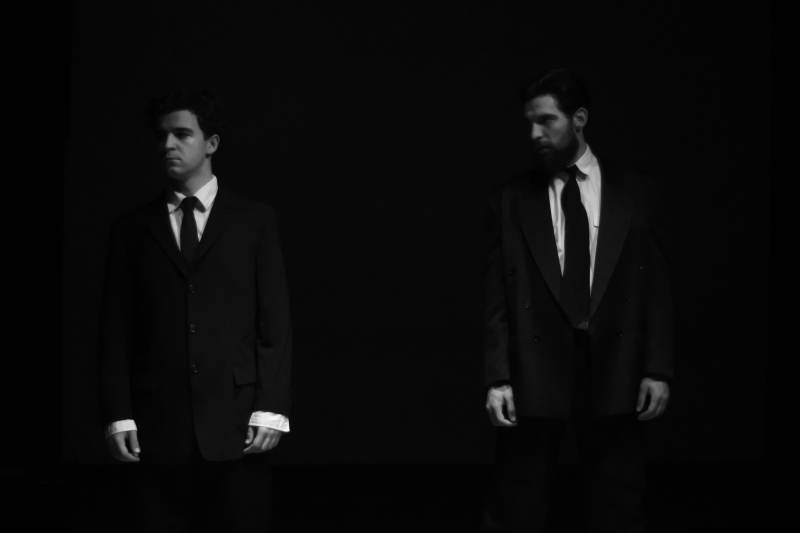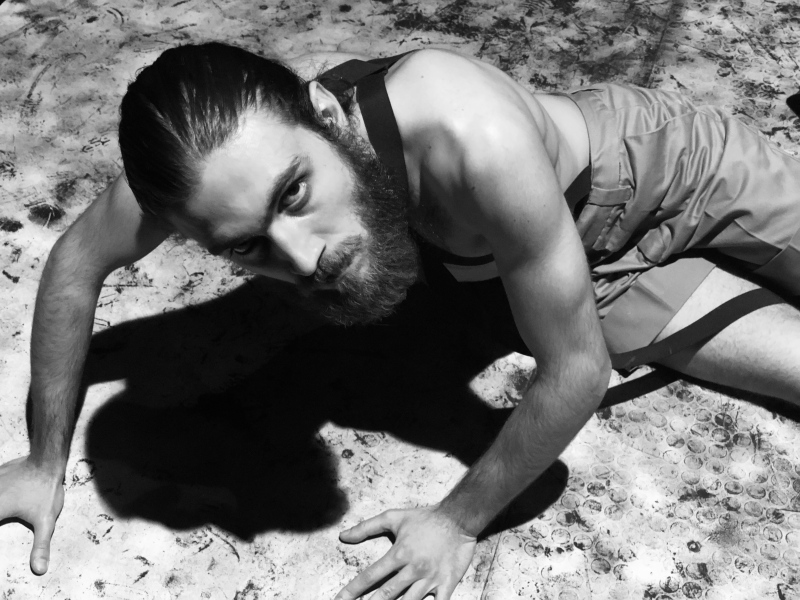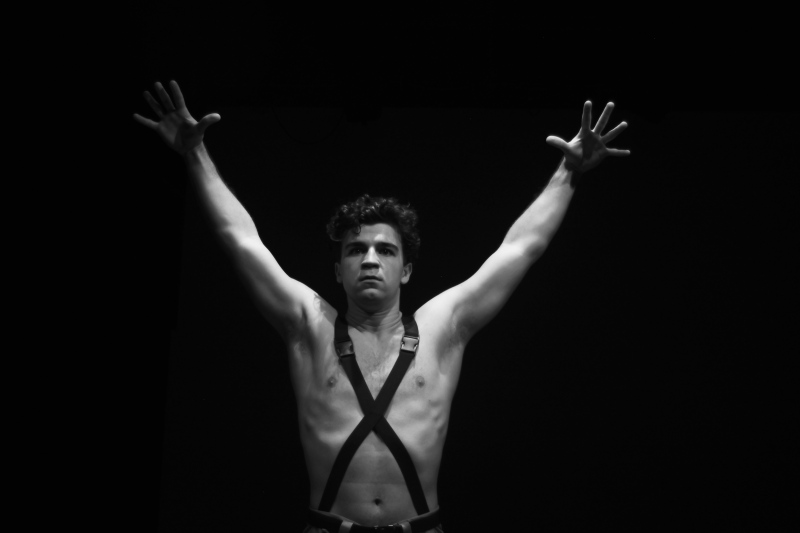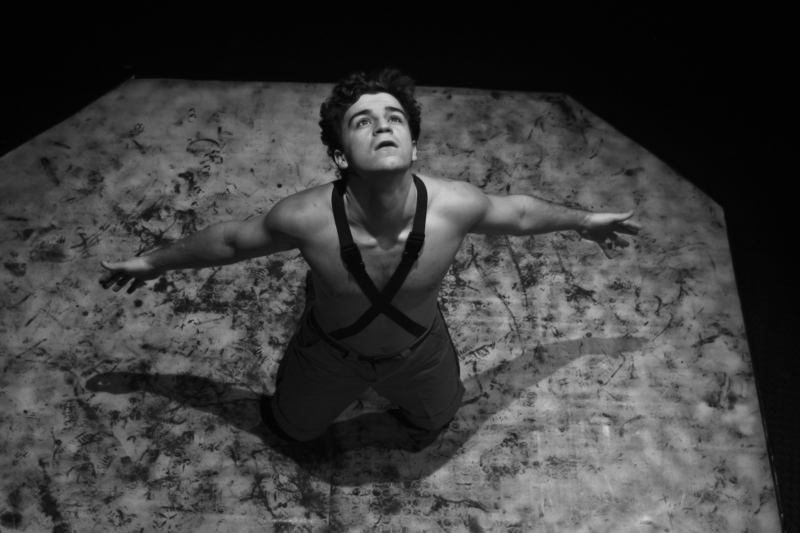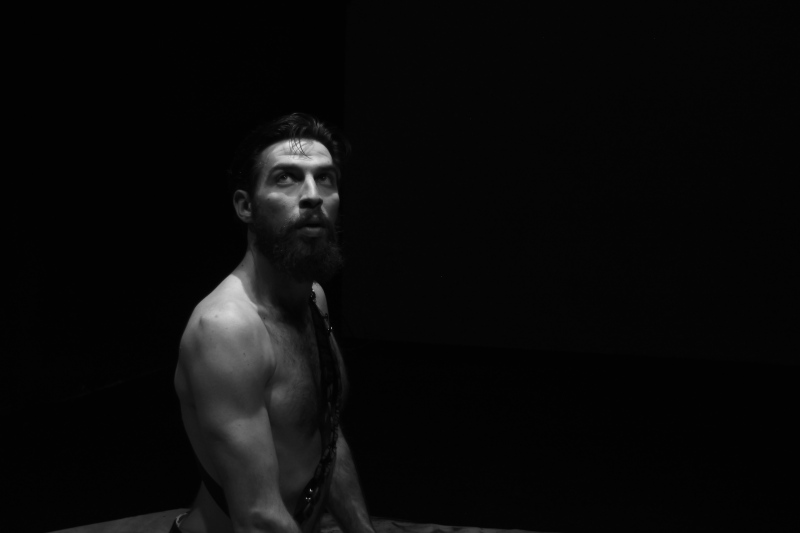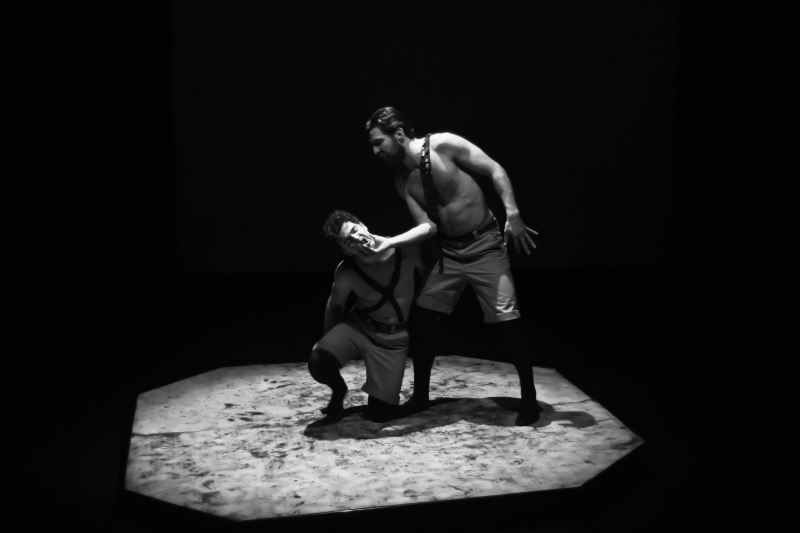The Wound Philoctetes (Post-truth Lemnos)
after the play "Philoctetes" by Heiner Muller
The Wound Philoctetes (Post-truth Lemnos)
after the play "Philoctetes" by Heiner Muller
90 min
Director: Boris Krustev
Scenography: Gergana Lazarova Rankal, Yana Vasileva, Rosica Gruncharova
Music: Karolina Kojnova
Performers: Ivan Nikolov, Atanas Petkov, Deqn Jekov
Scenography: Gergana Lazarova Rankal, Yana Vasileva, Rosica Gruncharova
Music: Karolina Kojnova
Performers: Ivan Nikolov, Atanas Petkov, Deqn Jekov
After the play Philoctetes by Heiner Müller
Directed by Boris Krastev
Set design: Gergana Lazarova - Rankle, Yana Vasileva, Rositsa Grancharova
Music: Caroline Koinova
Actors: Ivan Nikolov, Atanas Petkov, Deyan Zhekov
Classical work exploring the body's resistance to the violence of the text, fixing on codes that cause and/or are caused by the mechanisms of demagogy, populism, and post-truth. Presentation of "alternative fact" or how to lie without lying. The body-material-Philoctetes, which must be modeled, shaped, and subordinated by the media tool-Neoptolem, at the request of the hand-ideology-Odysseus. A monster with three heads and one body.
Boris Krastev
The project is realised with the support of the “Debuts” program at National Culture Fund and Goethe Institute Sofia.
Some more words
In a forest near Lerna, Hercules finally found the traces of the monster, the Hydra ninth head, with a snake's body. Her hide was in a huge cave, surrounded by a deep swamp. As soon as she sniffed human flesh, Hydra crawled from the cave. At that moment, the arrows of Hercules hit her heads. The hydra stood up in her tail, opened the huge mouths of her heads, and jerked on Hercules. But he stepped on his huge body, covered with thick shimmering flakes, and pressed him to the Earth. Hydra had her long tail twisted around Hercules' feet to knock him down on Earth, but he did not move and with his heavy mace he began to strike at the Hydra’s head and cut them one after another ... But she remained alive and with even more rage she tightened his legs with his tail. The battle was becoming more fierce and heavier, because from each split head of the Hydra two new heads grew up immediately. Then Hercules summoned for help his nephew Yolai, who burned the neck of every head, which Hercules had cut off, so that new heads could not grow up from the burning chinks. Soon remained only the immortal head of Hydra. Hercules grabbed it with his powerful hands, plucked it together with its neck, and cast her alive into a deep pit, which he buried with a huge rock, so that she could never get out of it, and put a sacrificial altar on top. Hercules then cut the Hydra body and dipped its arrows into her black poisonous blood so that from now on, the wounds caused by these arrows could not be healed with any remedies or by anyone. Before he died, Hercules gave the bow and the poison arrows to his best friend, Philoctetes ...
Years later, on the way to the war with Troy, the Greeks stood in a dead calm and were forced to stop on a deserted island. They had to offer sacrifices to the gods, but no one knew where the sacrificial altar was, but they were afraid of the curse they had all heard. Only Philoctetes stepped to the altar, but there lurks the only surviving head of Hydra, she smelled her own blood, with which arrows were soaked, thought that it was Hercules who returns to finish the job ... and bit Philoctetes foot.
The above-described mix stories that are distant in time and place and could not be called a myth, but they sound plausible, which today is more than enough. Ears and eyes lie Philoctetes, but he has no choice but to believe them.
Boris Krastev
Directed by Boris Krastev
Set design: Gergana Lazarova - Rankle, Yana Vasileva, Rositsa Grancharova
Music: Caroline Koinova
Actors: Ivan Nikolov, Atanas Petkov, Deyan Zhekov
Classical work exploring the body's resistance to the violence of the text, fixing on codes that cause and/or are caused by the mechanisms of demagogy, populism, and post-truth. Presentation of "alternative fact" or how to lie without lying. The body-material-Philoctetes, which must be modeled, shaped, and subordinated by the media tool-Neoptolem, at the request of the hand-ideology-Odysseus. A monster with three heads and one body.
Boris Krastev
The project is realised with the support of the “Debuts” program at National Culture Fund and Goethe Institute Sofia.
Some more words
In a forest near Lerna, Hercules finally found the traces of the monster, the Hydra ninth head, with a snake's body. Her hide was in a huge cave, surrounded by a deep swamp. As soon as she sniffed human flesh, Hydra crawled from the cave. At that moment, the arrows of Hercules hit her heads. The hydra stood up in her tail, opened the huge mouths of her heads, and jerked on Hercules. But he stepped on his huge body, covered with thick shimmering flakes, and pressed him to the Earth. Hydra had her long tail twisted around Hercules' feet to knock him down on Earth, but he did not move and with his heavy mace he began to strike at the Hydra’s head and cut them one after another ... But she remained alive and with even more rage she tightened his legs with his tail. The battle was becoming more fierce and heavier, because from each split head of the Hydra two new heads grew up immediately. Then Hercules summoned for help his nephew Yolai, who burned the neck of every head, which Hercules had cut off, so that new heads could not grow up from the burning chinks. Soon remained only the immortal head of Hydra. Hercules grabbed it with his powerful hands, plucked it together with its neck, and cast her alive into a deep pit, which he buried with a huge rock, so that she could never get out of it, and put a sacrificial altar on top. Hercules then cut the Hydra body and dipped its arrows into her black poisonous blood so that from now on, the wounds caused by these arrows could not be healed with any remedies or by anyone. Before he died, Hercules gave the bow and the poison arrows to his best friend, Philoctetes ...
Years later, on the way to the war with Troy, the Greeks stood in a dead calm and were forced to stop on a deserted island. They had to offer sacrifices to the gods, but no one knew where the sacrificial altar was, but they were afraid of the curse they had all heard. Only Philoctetes stepped to the altar, but there lurks the only surviving head of Hydra, she smelled her own blood, with which arrows were soaked, thought that it was Hercules who returns to finish the job ... and bit Philoctetes foot.
The above-described mix stories that are distant in time and place and could not be called a myth, but they sound plausible, which today is more than enough. Ears and eyes lie Philoctetes, but he has no choice but to believe them.
Boris Krastev

